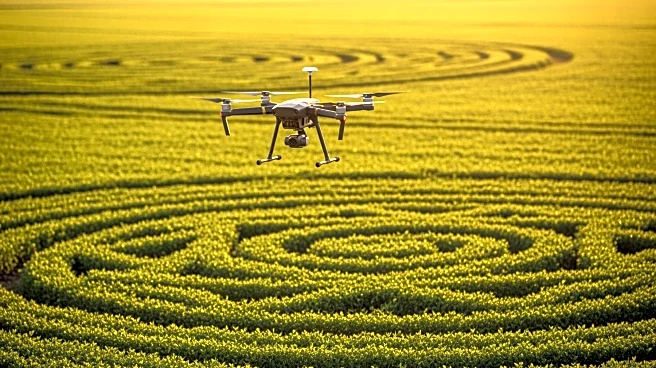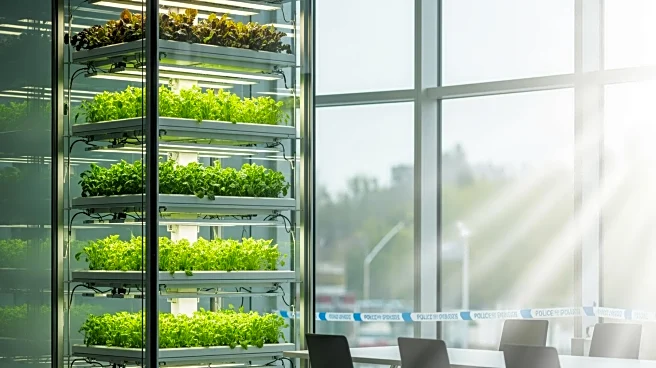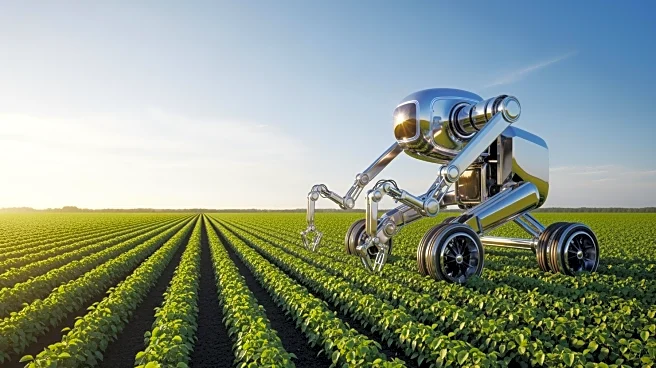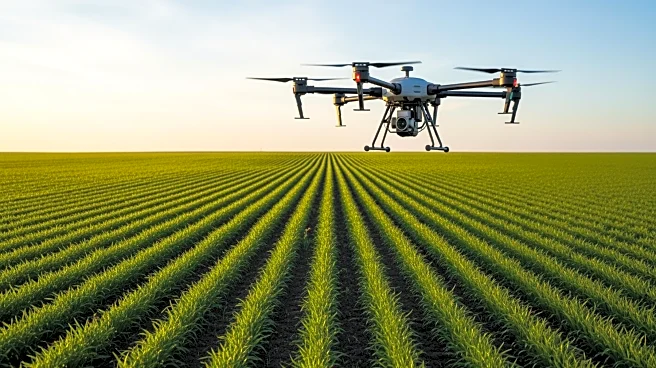What's Happening?
The vertical farming market in the United States is projected to grow from $9.023 billion in 2025 to $58.83 billion by 2035, driven by urbanization and technological advancements. This growth is fueled
by the need for space-efficient farming solutions due to rapid urban growth and limited arable land. Vertical farming utilizes automation, IoT-enabled sensors, and AI-based monitoring systems to optimize crop yield, water usage, and energy efficiency. The market is seeing widespread adoption across commercial, industrial, and urban agriculture sectors, with key players like AeroFarms and Plenty Unlimited Inc. leading the charge.
Why It's Important?
The expansion of vertical farming is crucial for addressing food security and sustainability challenges in urban areas. It offers a solution to produce fresh, locally grown produce year-round, reducing dependency on seasonal changes and climatic conditions. The integration of technology in farming practices enhances resource efficiency and sustainability, minimizing water and land usage. This shift towards controlled-environment agriculture can significantly reduce the environmental impact of food production, aligning with growing consumer demand for sustainable and healthy food options.
What's Next?
The vertical farming market is expected to see increased integration of IoT, AI, and automation systems to enhance efficiency and crop management. Urban agriculture initiatives are likely to expand, with vertical farming integrated into city landscapes for fresh produce. The focus will be on cultivating high-value crops like berries, herbs, and medicinal plants, offering opportunities for premium market segments. As technology continues to advance, vertical farming solutions will become more accessible and efficient, potentially transforming urban food production.












